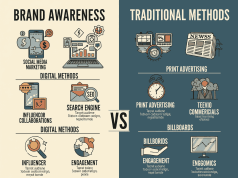In the ever-evolving landscape of digital advertising, understanding what constitutes success is paramount for marketers. Measuring success is not just about tracking basic metrics; it’s about deriving insights that inform strategy and optimize campaigns. Here’s a comprehensive look at key metrics every advertiser should track to ensure they are on the right path.
1. Return on Investment (ROI)
Definition: ROI measures the profitability of your advertising campaigns relative to the costs incurred.
Why It Matters: Understanding ROI helps advertisers determine whether their campaigns are yielding profitable returns. A positive ROI indicates that the campaign is financially viable.
How to Calculate:
[ \text{ROI} = \frac{\text{Net Profit}}{\text{Cost of Investment}} \times 100 ]
2. Click-Through Rate (CTR)
Definition: CTR is the ratio of users who click on an ad to the number of total users who view the ad.
Why It Matters: A higher CTR suggests that your ad is relevant and appealing to your target audience. It’s a critical metric for assessing ad performance.
How to Calculate:
[ \text{CTR} = \frac{\text{Total Clicks}}{\text{Total Impressions}} \times 100 ]
3. Cost Per Acquisition (CPA)
Definition: CPA measures the cost associated with acquiring a customer through a specific campaign.
Why It Matters: Knowing your CPA helps advertisers assess the efficiency of their marketing spend and identify areas for improvement.
How to Calculate:
[ \text{CPA} = \frac{\text{Total Campaign Costs}}{\text{Total Conversions}} ]
4. Conversion Rate
Definition: The conversion rate is the percentage of visitors who complete a desired action, such as making a purchase or signing up for a newsletter.
Why It Matters: This metric indicates how effective your ads are at driving desired actions. Improving conversion rates can significantly impact overall campaign success.
How to Calculate:
[ \text{Conversion Rate} = \frac{\text{Total Conversions}}{\text{Total Visitors}} \times 100 ]
5. Customer Lifetime Value (CLV)
Definition: CLV estimates the total revenue a business can expect from a single customer account throughout the business relationship.
Why It Matters: Understanding CLV helps advertisers allocate budget effectively and focus on long-term customer relationships.
How to Calculate:
[ \text{CLV} = \text{Average Purchase Value} \times \text{Purchase Frequency} \times \text{Customer Lifespan} ]
6. Impressions and Reach
Definition: Impressions refer to the total number of times an ad is displayed, while reach is the number of unique users who see the ad.
Why It Matters: Tracking impressions and reach helps advertisers gauge the visibility of their campaigns and understand audience penetration.
How to Track: Most advertising platforms provide data on impressions and reach directly in their dashboards.
7. Engagement Rate
Definition: This metric captures how users interact with your content, including likes, shares, comments, and more.
Why It Matters: A high engagement rate reflects the effectiveness of your ad in connecting with the audience, which can lead to higher conversion rates.
How to Calculate:
[ \text{Engagement Rate} = \frac{\text{Total Engagements}}{\text{Total Impressions}} \times 100 ]
8. Ad Spend and Budget Utilization
Definition: This metric tracks how much is spent on ads versus the allocated budget.
Why It Matters: Keeping track of ad spend ensures that campaigns remain within budget and helps with financial planning for future campaigns.
How to Track: Use tools and dashboards that monitor real-time spending against budget parameters.
9. Quality Score
Definition: Often used in platforms like Google Ads, quality score measures the relevance and quality of your ads, keywords, and landing pages.
Why It Matters: A high-quality score can lead to lower costs per click and better ad placements. It’s key for optimizing campaign efficiency.
Conclusion
Tracking these key metrics equips advertisers with the insights they need to make informed decisions, optimize campaigns, and drive better results. By understanding what to measure and how to interpret these metrics, advertisers can move beyond basic performance assessments and focus on strategies that enhance ROI and overall success. In the dynamic world of advertising, data-driven decision-making is the cornerstone of effective marketing strategy.









